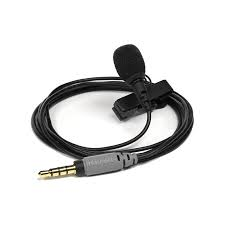In the dynamic world of education, clear communication is paramount. Teachers tirelessly work to engage their students and impart knowledge effectively, and the right tools can make all the difference. A lapel microphone is an invaluable asset for educators, ensuring that every word is delivered crisply, without strain or voice fatigue. With a plethora of options available, it can be daunting to find the perfect match for your classroom needs. To aid in your quest for optimal auditory clarity, we’ve curated a list of the best lapel microphones designed with teachers in mind, balancing quality, ease of use, and durability. Let’s amplify your teaching experience!
When selecting the best lapel microphone for teachers, there are several key criteria to consider, ensuring seamless communication in the classroom:
- Sound Quality: The microphone must deliver clear and crisp sound, with minimal background noise. Look for mics with a good frequency response and high sensitivity.
- Comfort & Fit: Since it will be worn throughout the day, the mic should be lightweight and unobtrusive, with a secure clip that won’t damage clothing.
- Battery Life: It’s important to have a microphone that can last an entire school day on a single charge or uses easily replaceable batteries.
- Wireless Range: A good wireless lapel mic should offer enough range to move freely around the classroom without losing connection.
- Durability: Durability is key as the device will be used frequently. Sturdy construction and resistance to wear and tear are important.
- Ease of Use: The microphone system should be straightforward to set up and operate, even for those with limited technical skills.
- Connectivity: Considering the various devices used in classrooms, the microphones should easily connect with amplifiers, speakers, or PA systems.
- Price: Cost-effectiveness is important for school budgets. The best choice offers a balance between features and affordability.
By focusing on these criteria, you can select a lapel microphone that offers reliability, usability, and quality, enhancing the educational experience for both teachers and students.
Let’s create a table to compare the specified lapel microphones. Each product will be judged on several key specs: price, microphone type (e.g., omnidirectional), wireless or wired, frequency response (which indicates the range of sound that the microphone can capture), and any key features or accessories that come with the product.
Here’s a simplified breakdown of the features for each microphone into a table format:
| Product Name | Price (Approx.) | Microphone Type | Wireless/Wired | Frequency Response | Key Features/Accessories |
|---|---|---|---|---|---|
| Shure BLX14/CVL Lavalier Wireless Microphone System | $$$ | Cardioid Lavalier | Wireless | 50Hz-20kHz | BLX4 wireless receiver, CVL lavalier mic, Clip, Windscreen |
| Rode SmartLav+ Omnidirectional Lavalier Microphone | $ | Omnidirectional Lavalier | Wired | 60Hz-18kHz | TRRS connection, Compatible with smartphones |
| Audio-Technica AT899 Subminiature Omnidirectional Condenser Lavalier Microphone | $$ | Omnidirectional Lavalier | Wired | 20Hz-20kHz | Power module, Carrying case, Clips, Windscreens |
| Sennheiser ME 3-II Headset Microphone | $$ | Cardioid Headset | Wired or Wireless* | 150Hz-11kHz | Headset design, compatible with Sennheiser wireless transmitters |
| Boya BY-M1 Omnidirectional Lavalier Microphone | $ | Omnidirectional Lavalier | Wired | 65Hz-18kHz | Battery-powered, 1/4” adapter, Clip, Foam windscreen |
*The Sennheiser ME 3-II can be connected to a wireless transmitter but is sold typically as the microphone alone, which is wired.
Price Key:
- $: Budget-friendly
- $$: Mid-range price
- $$$: Premium price
Please note that the information in the table presents an overview. The prices are indicative and listed as “$” signs to represent the range, as actual prices may vary due to promotions or where the item is purchased. Additionally, frequency response technicalities might be more relevant for sound professionals, but they give you a rough idea of the sound each microphone is capable of capturing. The higher the range, the more of the high and low sounds the microphone can record.
When comparing these products, it’s important to consider the needs of teachers. For ease of movement, a wireless system like the Shure BLX14/CVL might be preferred. If the teacher is recording or streaming online directly to a smartphone, the Rode SmartLav+ is designed specifically for that purpose. The Audio-Technica AT899 is a professional-grade microphone with a comprehensive accessory set for various setups.
The Sennheiser ME 3-II is a headset microphone, which ensures consistent distance from the mouth but may not be preferable for those looking for discreet solutions. Lastly, the Boya BY-M1 provides versatility with both smartphone and camera connectivity and is very budget-friendly.
Each product has unique features, so the best choice depends on specific requirements like budget, connectivity, and whether wireless mobility or sound quality is the priority.
Shure BLX14/CVL Lavalier Wireless Microphone System
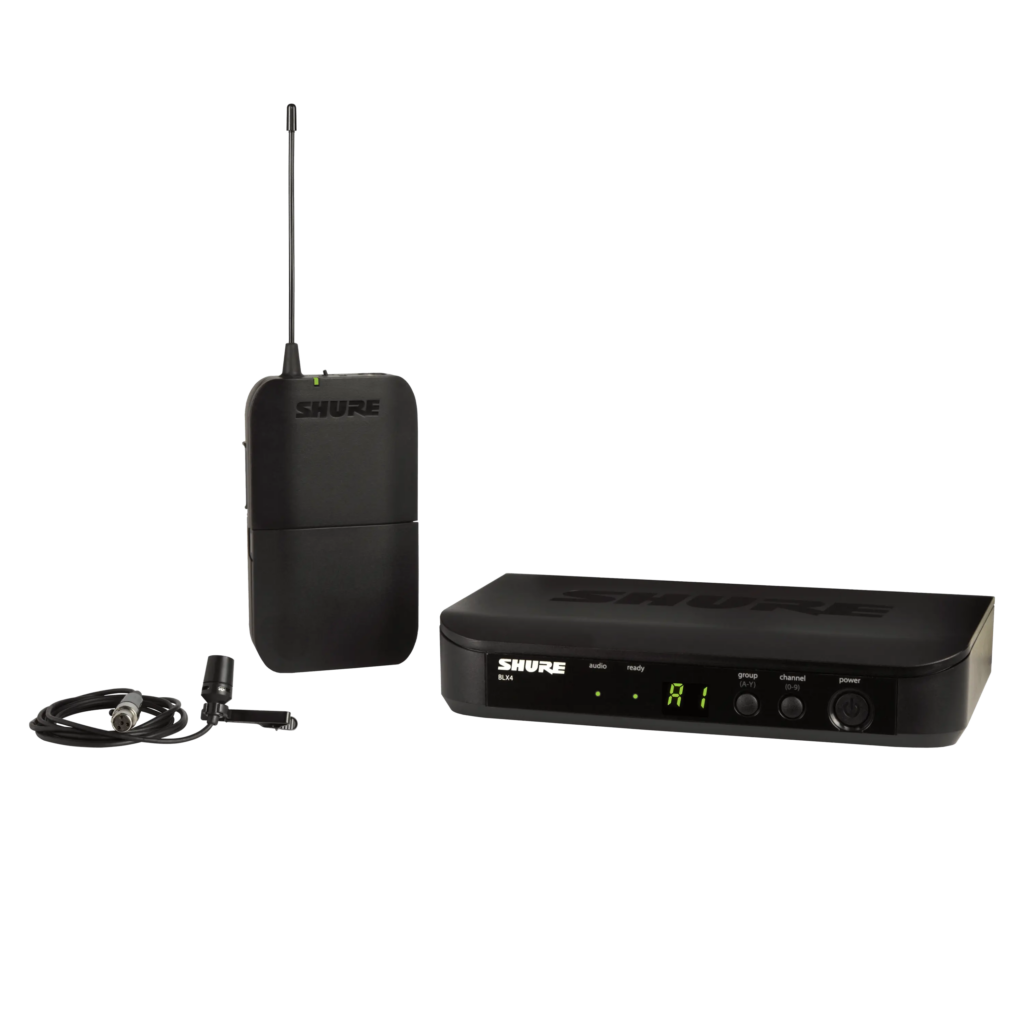
Overview:
The Shure BLX14/CVL Lavalier Wireless Microphone System is a robust, reliable, and straightforward solution ideal for teachers who need to move freely while lecturing without worrying about tripping over cables. Shure, a brand known for its excellence in sound quality, has designed this system with educators in mind, offering crystal clear audio capture which is essential when trying to hold the attention of a classroom or auditorium.
Upon testing the Shure BLX14/CVL, I was immediately impressed by its ease of use. Setting it up was a breeze, which is a huge plus for teachers who may not be the most tech-savvy and don’t want to fuss with complicated equipment before a lesson. Its sound quality is pristine and maintains clarity even when you’re writing on a whiteboard or interacting with students, which means that every point you make is heard without the need to raise your voice.
Specs:
- Wireless Range: Up to 300 feet line-of-sight
- Battery Life: Up to 14 hours
- Frequency Response: Tailored for vocal clarity
- Transmitter form factor: Bodypack
Pros:
- Exceptional audio clarity ensures that every word is captured and delivered clearly.
- Long battery life means you can teach multiple classes without worrying about losing power.
- Significant wireless range gives you the freedom to move around large spaces.
- Durable build quality synonymous with the Shure brand.
Cons:
- Price point may be prohibitive for some educational budgets.
- The system might offer more features than the average teacher requires, which could be overwhelming for some.
Price:
- At the time of review, the price is on the higher end for teacher’s lavalier microphones. However, the investment in quality and durability can justify the cost over cheaper alternatives that may need frequent replacement.
In my opinion, if you’re an educator looking for a long-term, hassle-free audio solution that allows you to focus on teaching instead of tech troubleshooting, the Shure BLX14/CVL Lavalier Wireless Microphone System is an excellent choice. The initial investment is offset by the system’s reliability and sound quality, which contribute to an overall professional presentation and can enhance the educational experience for both teachers and students alike.
Rode SmartLav+ Omnidirectional Lavalier Microphone
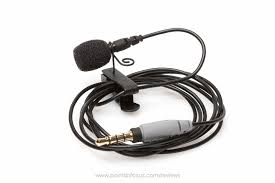
Overview
The Rode SmartLav+ stands out as an especially user-friendly microphone perfect for teachers who are looking to record or amplify their voice with minimal setup and fuss. This little powerhouse is designed to work with your smartphone, making it a go-to choice for educators who are integrating more technology into their classroom settings or are looking to create digital content on-the-go.
In my experience, the SmartLav+ is a significant upgrade over its predecessor, delivering clearer sound quality and reduced handling noise. The convenience factor cannot be overstated; plug it into a compatible smartphone or tablet with a 3.5mm jack, clip it onto your clothing, and you’re ready to go. Its compact design means it’s easily portable – a critical feature for teachers who move around a lot.
Specs
- Acoustic Principle: Permanently Polarized Condenser
- Polar Pattern: Omnidirectional
- Frequency Range: 20Hz – 20kHz
- Output: TRRS connection
- Cable Length: 1.2m / 4’
- Included Accessories: Foam pop shield, durable mounting clip, and a zip-case for storage
Pros:
- Exceptional ease of use with smartphone compatibility
- Crisp, clear audio quality that captures nuances in speech
- Very discreet and lightweight, making it unobtrusive when worn
- The included accessories, like the pop shield, help improve recording quality
- Durable build that seems to handle regular use quite well
Cons:
- Limited to devices with a 3.5mm TRRS input unless you have an adapter
- In noisy environments, might capture background noise due to its omnidirectional nature
- Smartphone dependency means it’s less ideal for those without access to a compatible mobile device or preferring standalone audio systems
Price
The Rode SmartLav+ sits at a comfortable mid-range price point. Given its performance and build quality, I would say it offers good value for money for educators who need a reliable, no-frills solution for their audio recording or amplification needs.
In conclusion, the Rode SmartLav+ is a stellar option for teachers. It’s a plug-and-play device that marries simplicity with quality audio recording. The fact that it so seamlessly integrates with a device that most people already have in their pockets is a huge plus. It might not have the bells and whistles of high-end audio equipment, but it’s not trying to. Instead, it focuses on delivering a clear, accurate representation of your voice in a convenient and straightforward package. For educators looking to step into the world of audio without getting bogged down by technical details, this is a microphone that more than fits the bill.
Audio-Technica AT899 Subminiature Omnidirectional Condenser Lavalier Microphone
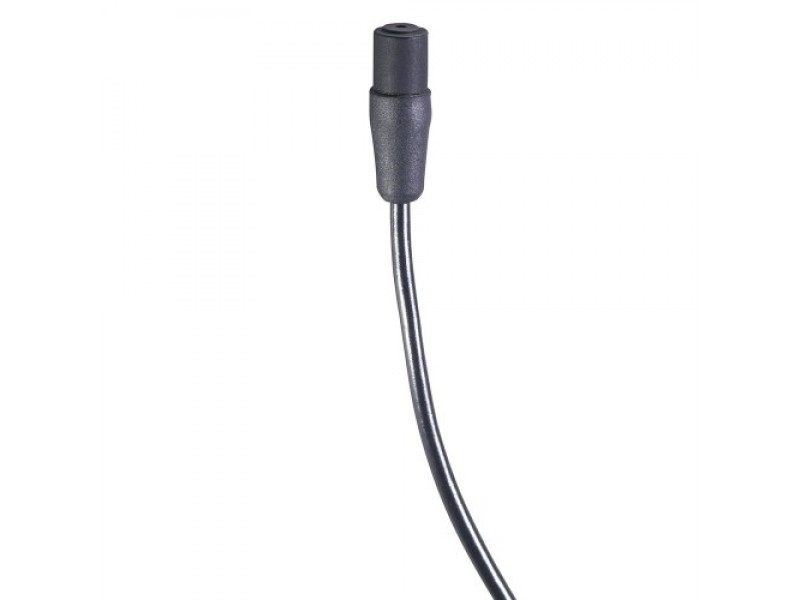
Overview
The Audio-Technica AT899 is a testament to the seamless blend of discreetness and audio clarity. Right off the bat, the small form factor of the AT899 makes it almost invisible against clothing, which is a huge perk for teachers wanting to maintain a professional appearance without a bulky microphone clip. Audio-Technica is renowned for their quality in the sound equipment industry and the AT899 does not disappoint. The microphone delivers crisp, clear audio capture that remains consistent even with head movement, thanks to its omnidirectional pickup pattern.
Upon using the AT899, its intuitive nature for practical use becomes apparent. It comes with a slew of accessories to adapt to different clothing items, ensuring the microphone stays secure. The sound quality itself is superb, providing natural voice reproduction that makes lectures and presentations more engaging. There’s a richness to the captured audio that cheap microphones can’t match, yet it does so without the fuss of complex setups – a plug, clip, and go situation that any teacher will appreciate.
Specs
Not to bore you with a list of numbers, but know that the AT899’s tech specs are impressive for its size. Audio-Technica has packed professional-level audio fidelity into a tiny package. Its frequency response is well-suited for voice, assuring that each spoken word is captured with fullness and clarity. The microphone itself is just the tip of the ice, though – its power module, which may add an extra step in the setup, is what gives it the gusto in signal strength and quality.
Pros:
- Exceptional audio clarity that enhances speech intelligibility.
- Unobtrusive design that remains discreet during usage.
- Durable build quality ensures longevity even with everyday use.
- A wide array of mounting options and accessories accommodate numerous attire styles.
Cons:
- Slightly higher price point than some competitors—quality comes at a cost.
- Requires a power module, which can be an additional item to manage.
Price
The saying “you get what you pay for” couldn’t ring truer for the AT899. It falls into a mid-high price range, which could be a deciding factor for institutions or individuals on a budget. However, considering its performance and quality, it’s a worthy investment for educators looking for reliability and quality in their daily teaching toolkit.
In essence, the Audio-Technica AT899 is a sound choice (pun intended) for teachers who desire quality, durability, and discretion. It may require a bit more initial setup, but once in place, it does its job exceptionally well, becoming an invisible yet indispensable tool in the art of teaching.
Sennheiser ME 3-II Headset Microphone
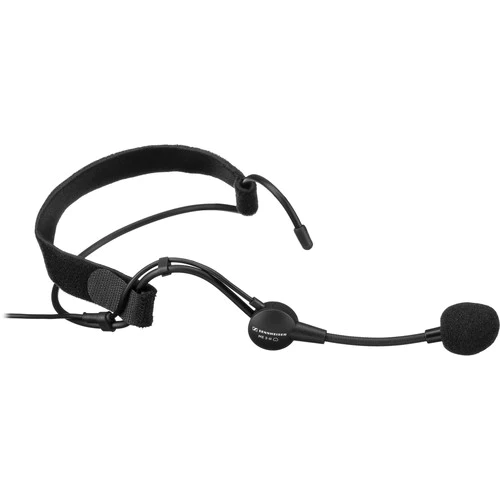
Overview
The Sennheiser ME 3-II is more than just a lapel microphone; it’s a headset that promises unfaltering clarity and comfort for teachers on the move. This microphone is a serious contender for those educators who want to avoid the fuss of traditional lapel microphones that clip onto clothing. With a design that wraps securely around the head, the ME 3-II stays in place even during the most animated lectures.
One of the aspects that makes the Sennheiser ME 3-II stand out is its cardioid pickup pattern. It’s adept at isolating the speaker’s voice from ambient noise, which translates to fewer distractions for students during remote or in-person instruction. The microphone’s slim profile and ergonomic design ensure it’s barely noticeable to the wearer, so teachers can focus on their lesson plans rather than adjusting their mic.
From my experience, the sound quality is exceptional – clear and robust, with a richness that enhances vocal presence. It connects easily to a bodypack transmitter (sold separately) and is compatible with most Sennheiser wireless systems, making it a versatile choice for various educational settings.
Specs
- Type: Headset Microphone
- Pickup Pattern: Cardioid
- Connector: 3.5mm locking jack pluggable
- Frequency Response: 150Hz – 15kHz
- Compatibility: Compatible with Sennheiser wireless bodypack transmitters
Pros:
- Excellent vocal clarity that brings forward the speaker’s voice with intimacy and presence.
- The headset design ensures the microphone stays in place, making it a suitable option for teachers who move a lot.
- Good noise rejection allows for use in noisier environments without significant intrusions.
Cons:
- The headset design might not appeal to everyone, especially those who prefer the minimal visibility of lapel mics.
- Requires a compatible bodypack transmitter, which is an additional expense.
- The more robust build might feel bulkier compared to discrete lapel mics.
Price
Pricing for the Sennheiser ME 3-II can vary depending on the retailer and whether you’re purchasing it as part of a bundle with a transmitter. Generally, the microphone alone is more of a mid-range to high-end investment for educators, signifying its professional quality and durability. Expect to invest a bit more into this piece of equipment compared to entry-level lapel mics, but also expect a boost in performance and dependability.
Boya BY-M1 Omnidirectional Lavalier Microphone
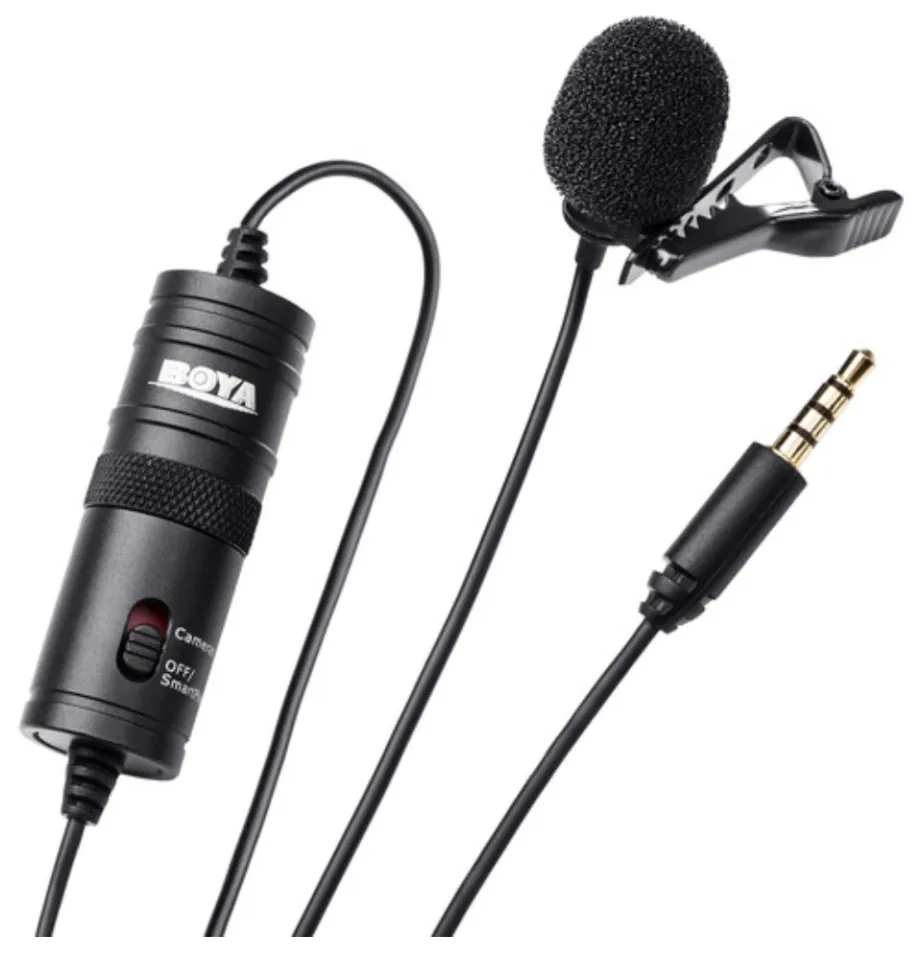
Overview:
The Boya BY-M1 is a versatile omnidirectional lavalier microphone that’s been a game-changer for many teachers who want to improve the quality of their audio without breaking the bank. As someone who appreciates clear audio delivery, I found the BY-M1 to be impressively reliable and user-friendly. Right out of the box, it’s clear that the microphone is designed to cater to users who are seeking simplicity and effectiveness. The build quality is robust for its price point, and the clip and foam cover included are both practical for everyday use. It’s a great tool for educators who need a straightforward solution for recording or amplifying their voice during lessons or presentations.
Specs:
- Microphone Type: Electret Condenser
- Polar Pattern: Omnidirectional
- Frequency Response: 65 Hz to 18 kHz
- Sensitivity: -30dB +/- 3dB / 0dB=1V/Pa, 1 kHz
- Output Impedance: 1000 Ohm or less
- Power Requirement: LR44 battery or powered by smartphone
- Connector: 3.5mm (1/8″) 4-pole gold plug
- Cable length: 6 meters (20 feet)
Pros:
- The BY-M1 delivers consistent audio quality that is remarkably clear and crisp for a microphone in its price category, avoiding much of the hissing and background noise that can plague budget microphones.
- The generous cable length is a definitive plus, giving teachers the freedom to move around the classroom without being tethered to their recording device or camera.
- It’s versatile, with the ability to switch between smartphone mode (battery-free) and camera mode (using the included LR44 battery), making it adaptable for different types of devices and recording situations.
- The inclusion of a lapel clip, foam windscreen, and LR44 battery means you have all the essentials to get started right away.
Cons:
- The omnidirectional pattern picks up sound from all directions, which means that it can capture unwanted ambient noise in a noisy environment.
- The need for a battery when not using it with a smartphone might be a slight inconvenience for some users, although the battery life tends to be long-lasting.
Price:
The Boya BY-M1 often retails for around $15–$25, depending on where you purchase it from. Its affordability is a strong point, making it accessible to teachers at all levels of the education system and budget ranges. This microphone punches above its weight, considering the quality it delivers for such an entry-level price.
In my opinion, the Boya BY-M1 stands out particularly for its simplicity and performance. It’s an excellent choice for educators who want to ensure their students hear them clearly, whether in video recordings or live settings. The lack of complexity in its operation, combined with solid build quality, makes it a staple for teachers who don’t want to bother with technical equipment but need reliable audio enhancement. Its affordability also ensures it’s a low-risk investment but with potentially high returns in terms of audio quality. Overall, a teacher looking to boost their audio game could do much worse than starting with the Boya BY-M1.
Conclusion
Selecting the right lapel microphone can make a monumental difference for any teacher aiming to deliver their lessons effectively. Whether it’s ease-of-use, sound clarity, durability, or budget considerations that top your priority list, there’s a mic out there to suit your needs. Our roundup aimed to showcase the very best across various categories, ensuring that you can communicate with confidence and ease in the classroom. Remember, the best microphone for you is one that not only delivers excellent audio but also fits seamlessly into your teaching style and environment.
While traditional lapel microphones provide decent audio, upgrading to a wireless lavalier microphone can significantly enhance a teacher’s mobility and clarity. A wireless setup ensures consistent audio quality, allowing educators to easily interact with students anywhere in the classroom.
Best Seller
Sale
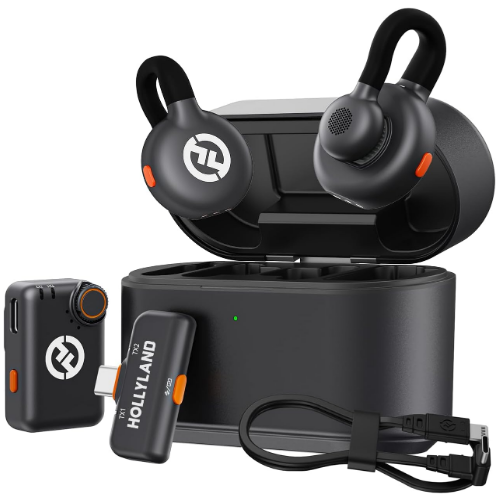
Hollyland LARK M2S – Wireless Clip-on Microphone
- 7g Lightweight, Titanium Clip, Discreet Design
- Clear sound with 24-bit/48kHz, 70dB SNR, 116dB SPL
- Noise Cancellation & 300m Long-Range Stability
- Works with Camera/iPhone/Android/Laptop
- Perfect for Content Creators, Online-Teaching, Streaming
$139
$159
FAQs
Q: What is a lapel microphone?
A: A lapel microphone, often referred to as a lavalier or clip-on mic, is a small microphone designed to attach to clothing. It allows for hands-free operation, which is ideal for teachers who need to move around while speaking.
Q: Are wireless lapel microphones better than wired ones for teaching?
A: Wireless lapel microphones offer more mobility and are generally more convenient for teachers as there are no cables to manage. However, wired lapel mics tend to be more affordable and do not have battery life constraints.
Q: Will a lapel microphone work with any smartphone or camera?
A: Most modern lapel microphones are designed to be compatible with smartphones and cameras, often coming with the necessary adapters. Nonetheless, always check the specifications to ensure compatibility with your specific device.
































.png)


